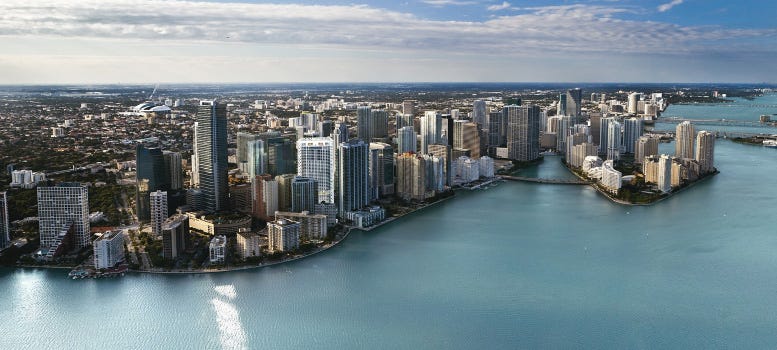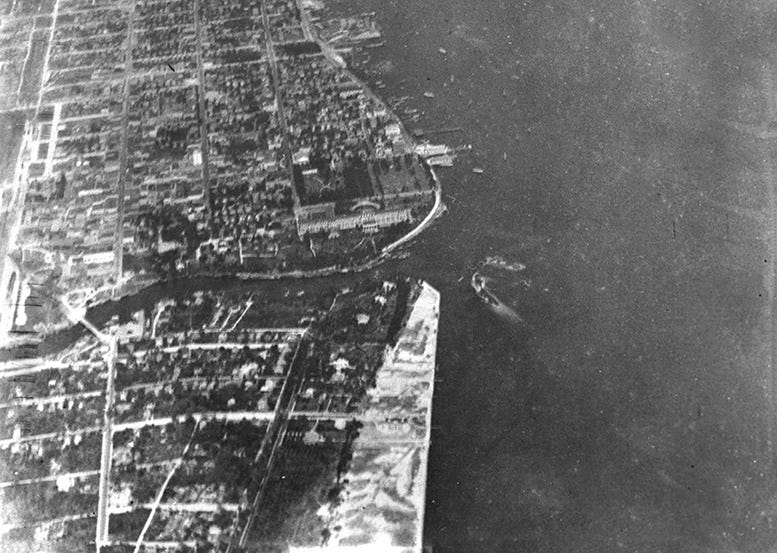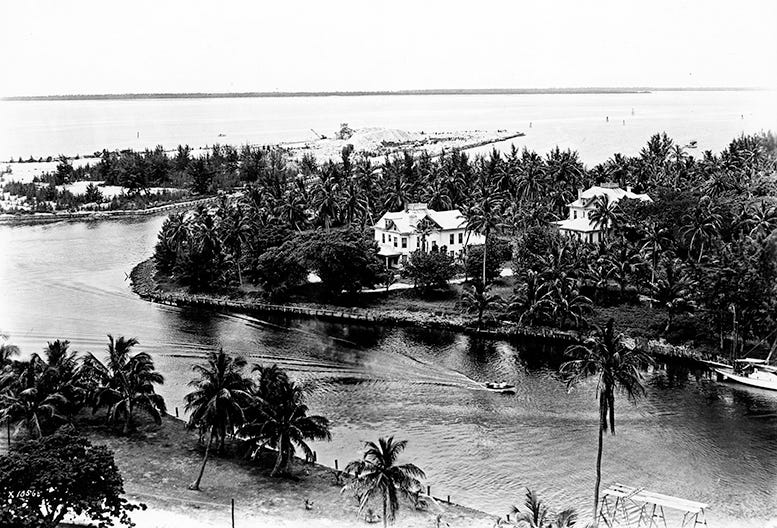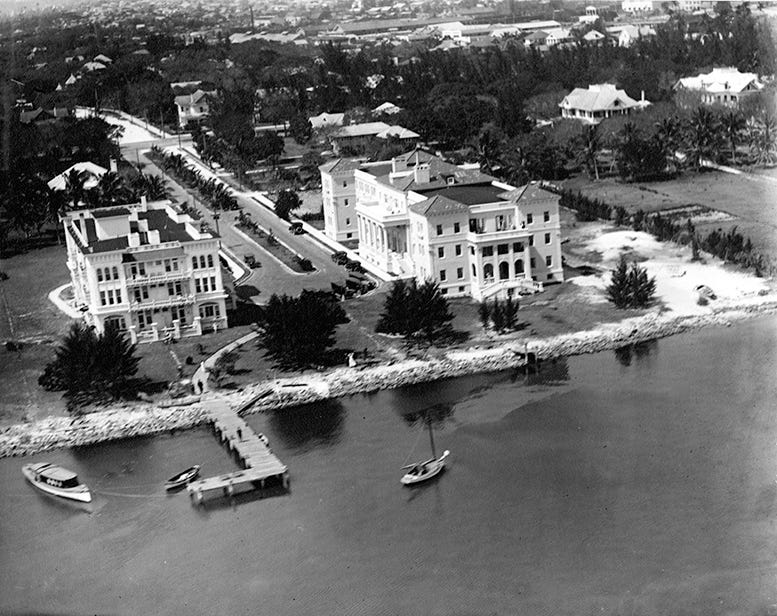Brickell Key on Claughton Island
The history of a spoil land mass that became Brickell Key on Claughton Island. On June 21, 1916, Margaret Burlingame acquired the spoil island that would become known as Burlingame Island.
As of the 2010 Census, Brickell Key consists of over 2800 residents. It is home to a five star hotel, office and retail, as well as, a public park. Brickell Key is largely regarded as paradise in the heart of Miami. It has come a long way from being an aggregation of discarded dredge material. Like so many islands found in Biscayne Bay, Brickell Key is a man-made creation.
When the Brickells arrived to the south side of the Miami River in 1871, William Brickell built a home and trading post. The location of these buildings would later be referred to as Brickell Point. When the Brickells looked east from their home, they saw nothing but bay water from Brickell Point to the peninsula that would later become Miami Beach. It wasn’t until Henry Flagler began to develop the city of Miami in 1896 that that view started to change. Flagler’s team removed a sand bar at the mouth of the Miami River. The team also used a dredge to deepen the river and bay adjacent to Flagler’s Royal Palm Hotel to create the first port of Miami.
The dredging of the Miami River was a point of contention for William Brickell. As part of the effort to deepen the Miami River, those that Flagler put in charge of dredging began to dump limestone and river silt along and just off the shore east of the Brickell property. It was the discard off the shoreline that began to create the first of two spoil islands.
Dredging of Mouth of Miami River Creates Spoil Island
During the dredging of the Miami Canal in 1912, the larger of two spoil islands ended up being expanded with additional river discard. The downstream dredge activity created a lot of free river silt that made its way to the mouth of the Miami River. This silt was then gathered and dumped in the area of the spoil islands. At this time, a smaller spoil island was forming to the southeast of the larger island. It was believed to have come from digging out a vessel that went aground on that spot.
By 1914, the widowed Mary Brickell was quite wealthy from land transactions. During the summer of that year, she had offered to remove the spoil islands at her own expense. The spoil islands were considered a nuisance and even Dr. James Jackson, the physician for the Royal Palm Hotel and later the namesake for Jackson Memorial Hospital, declared the islands to be a menace to the health and welfare of the public. The islands were considered unsightly, difficult to navigate and possessing an unpleasant odor. Mary Brickell had intended to pump the spoil material of the islands into some low lying areas on her property. However, there was enough opposition to her proposal that it was not accepted.
Auction of Spoil Island
The fate of the islands changed in 1916. By late spring, the Florida Internal Improvement Fund (FII), placed in ad to solicit bids for the land mass. Bids ranged from $10.10 to $3000 per acre for the five acre island. Mary Brickell’s bid was $750 for the entire parcel. Her bid was not the winning bid. On June 21st, 1916, the IIF trustees accepted the highest bid and ordered a deed to be issued to Mrs. M.R. Burlingame.
Mrs. Burlingame was a business woman who moved to Miami from Michigan. She was one of the few women to own an advertising agency at the time. Mrs. Burlingame was a big proponent of promoting Miami as a year round living destination. It was her intention to annex the smaller spoil island and to ultimately build her home on the combined islands. However, prior to the end of June in 1916, Mary Brickell filed suit to challenge the deed issued to Mrs. Burlingame.
Burlingame Island
The law suit filed by Mary Brickell was finally settled in 1918. The Florida Supreme Court declared in favor of Mrs. Burlingame and a deed was finally and officially issued. By 1920, Burlingame announced her intention to build a hotel or apartment house on the island. The island was referred to as Burlingame Island. In April of 1922, the War Department (later managed by the Army Corp of Engineers), issued a permit for a bulk head and fill of the five acre island. This work was scheduled to be complete by the end of 1922.
However, by 1924, nothing was ever developed on the island. It was eventually sold to E.J. Reed of Miami, who filed for a permit to fill a much larger, triangular-shaped island. There was no evidence that this permit was ever granted, but the request provided a preview to how future plans would influence the shape of today’s Claughton Island.
Through the remainder of the 1920s, not much had changed on Burlingame Island. There was no development and it was said that trees began taking over the topology. Some would say that the island belonged to the raccoons and rats. Ownership changed again in 1932 when R.P. Clark purchased the island. His dredging company was responsible for enlarging the island to 20.7 acres. Mr. Clark owned the island until January 1937.
Claughton Island in 1943
Keep reading with a 7-day free trial
Subscribe to Miami History to keep reading this post and get 7 days of free access to the full post archives.





